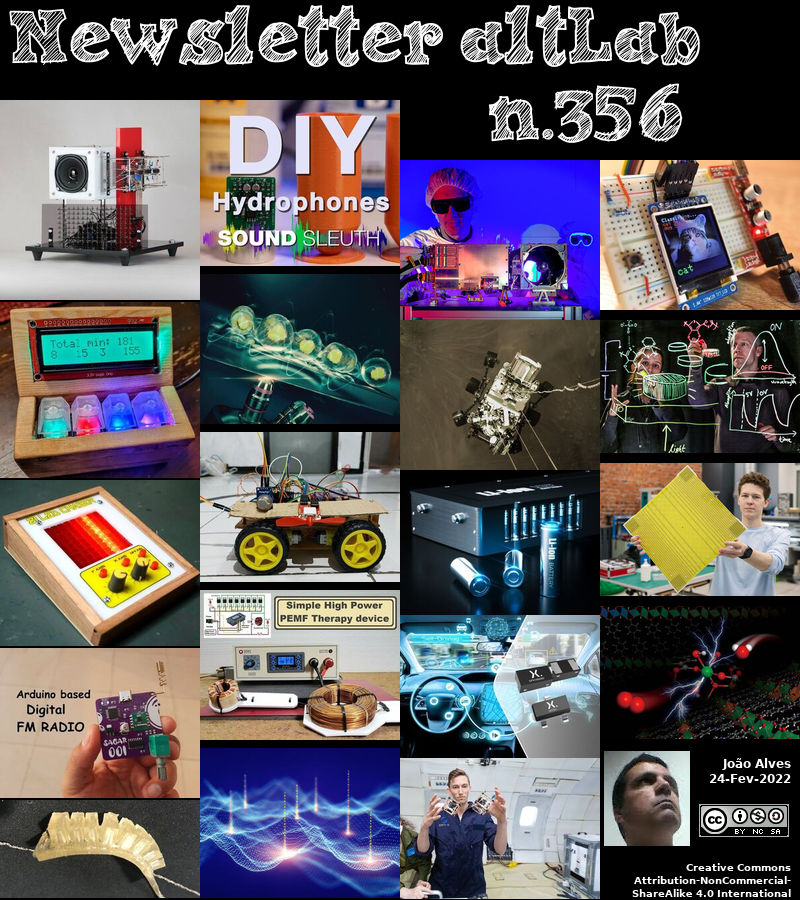2022-02-24 - Nº 356
Editorial
Esta é a Newsletter Nº 356 que se apresenta com o mesmo formato que as anteriores. Se gostar da Newsletter partilhe-a!
Todas as Newsletters encontram-se indexadas no link.
Esta Newsletter tem os seguintes tópicos:
Faz hoje anos que nascia, em 1663, o Engenheiro e inventor inglês Thomas Newcomen. Ele é o inventor da primeira máquina a vapor atmosférica bem sucedida do mundo. A sua invenção c.1711 entrou em uso até 1725 para bombear água das minas de carvão ou elevar a água para alimentar as rodas d'água. Em cada volta, o vapor enchia um cilindro fechado por um pistão, depois um jacto de água arrefecia e condensava o vapor no cilindro criando um vácuo, depois a pressão atmosférica empurrava o pistão para baixo. Um feixe transversal transferiu o movimento do pistão para o funcionamento da bomba. Isto foi um desperdício de combustível necessário para reaquecer o cilindro para o próximo curso. Apesar de lento e ineficiente, o motor da Newcomen foi utilizado durante os primeiros 60 anos da nova era do vapor que começou, talvez a invenção mais importante da Revolução Industrial.
Faz também hoje anos que nascia, em 1709, o inventor francês Jacques de Vaucanson. Ele foi o inventor de autómatos - dispositivos robotizados de significado posterior para a indústria moderna. Em 1737-38, produziu um tocador de flauta transversal, um tocador de tubo e de tambor, e um pato mecânico, que foi especialmente notável, não só imitando os movimentos de um pato vivo, mas também os movimentos de beber, comer, e "digerir". Fez melhorias na mecanização da tecelagem da seda, mas a sua invenção mais importante foi ignorada durante várias décadas - a de automatizar o tear por meio de cartões perfurados que guiavam os ganchos ligados aos fios de urdidura. (Mais tarde reconstruída e melhorada por J.-M. Jacquard, tornou-se uma das invenções mais importantes da Revolução Industrial).
Faz igualmente hoje anos que nascia, em 1841, o engenheiro irlandês John Philip Holland. Ele ficou conhecido como o "pai do submarino moderno", que concebeu e construiu o primeiro navio subaquático aceite pela Marinha dos Estados Unidos. Em 1873, emigrou para os EUA onde, com o apoio financeiro da Irish Fenian Society (que esperava utilizar submarinos contra a Inglaterra), construiu o Fenian Ram, um pequeno submarino que se revelou um sucesso limitado numa corrida de ensaio. Em 1895, a sua J.P. Holland Torpedo Boat Company recebeu um contrato da Marinha dos EUA para construir um submarino, e em 1898 foi lançado um submarino bem sucedido da Holanda, o primeiro submarino verdadeiramente prático. O governo dos EUA encomendou mais seis; encomendas semelhantes vieram de Inglaterra, Japão, e Rússia.
Faz também hoje anos que nascia, em 1946, o matemático russo Grigory Margulis. Ele recebeu a Medalha Fields em 1978 pelas suas contribuições para a teoria dos grupos Lie, embora não tenha sido autorizado pelo governo soviético a viajar para a Finlândia para receber o prémio. Em 1990, Margulis imigrou para os Estados Unidos. O trabalho de Margulis esteve largamente envolvido na resolução de uma série de problemas na teoria dos grupos Lie. Em particular, Margulis provou ser uma conjectura de longa data de Atle Selberg sobre subgrupos discretos de grupos Lie semi-simples. As técnicas que utilizou no seu trabalho foram extraídas de combinatórias, teoria ergódica, sistemas dinâmicos, e geometria diferencial.
Por fim, faz hoje anos que nascia, em 1955, o inventor e empresário norte-americano Steve Jobs. Ele, em 1976, co-fundou a Apple Inc. com Steve Wozniak para fabricar computadores pessoais. Durante a sua vida, foi-lhe concedido ou solicitado 338 patentes como inventor ou co-inventor não só de aplicações em computadores, dispositivos electrónicos portáteis e interfaces de utilizador, mas também de uma série de outras numa gama de tecnologias. Desde o início, esteve activo em todos os aspectos da empresa Apple, concebendo, desenvolvendo e comercializando. Após o sucesso inicial da série Apple II de computadores pessoais, o Macintosh substituiu-a com uma interface gráfica movida a rato. Ele manteve a Apple na vanguarda do design inovador, funcional e de fácil utilização com novos produtos, incluindo o tablet iPad e o iPhone. Ele também esteve envolvido com filmes de computação gráfica através da sua compra (1986) da empresa que se tornou Pixar.
Faz hoje 10 anos que era lançado para o mercado o Raspberry Pi. Desde então, tornou-se um fenómeno mundial, alimentando uma vasta gama de projectos hobby e de produtos comerciais. Desenvolvido na Inglaterra pela fundação Raspberry PI em associação com a Fabricante de Chips Broadcom o objectivo inicial desta placa era a promoção do ensino de ciência da computação básica em escolas de países em desenvolvimento. A versão originalmente lançada foi o Raspberry Pi 1 B com 256MB de memória RAM e tinha um custo de 35 USD.
Na Newsletter desta semana apresentamos diversas noticias, artigos científicos, projetos de maker e alguns vídeos interessantes. É apresentada a revista MagPI Magazine Nº 115 de Março.
 João Alves ([email protected])
João Alves ([email protected])
O conteúdo da Newsletter encontra-se sob a licença  Creative Commons Attribution-NonCommercial-ShareAlike 4.0 International License.
Creative Commons Attribution-NonCommercial-ShareAlike 4.0 International License.
Novidades da Semana
Outras Notícias

NASA’s Perseverance Celebrates First Year on Mars by Learning to Run
"The rover has racked up a series of accomplishments, including new distance records, as it reaches the end of the first of several planned science campaigns on the Red Planet. NASA’s Perseverance rover has notched up a slew of firsts since touching down on Mars one year ago, on Feb. 18, 2021, and the six-wheeled scientist has other important accomplishments in store as it speeds toward its new destination and a new science campaign. Weighing roughly 1 ton (1,025 kilograms), Perseverance is the heaviest rover ever to touch down on Mars, returning dramatic video of its landing. The rover collected the first rock core samples from another planet (it’s carrying six so far), served as an indispensable base station for Ingenuity, the first helicopter on Mars, and tested MOXIE (Mars Oxygen In-Situ Resource Utilization Experiment), the first prototype oxygen generator on the Red Planet. Perseverance also recently broke a record for the most distance driven by a Mars rover in a single day, traveling almost 1,050 feet (320 meters) on Feb. 14, 2022, the 351st Martian day, or sol, of the mission. And it performed the entire drive using AutoNav, the self-driving software that allows Perseverance to find its own path around rocks and other obstacles." [...]

Nexperia expands its portfolio of ESD protection solutions for automotive ethernet
"Nexperia, the expert in essential semiconductors today announced an expansion to its award-winning portfolio of automotive ethernet ESD protection devices. The three new devices are AEC-Q101 qualified and IEEE OPEN Alliance 100BASE-T1 and 1000BASE-T1 compliant ElectroStatic Discharge (ESD) protection devices designed to protect two bus lines from damage caused by ESD and other transients. PESD2ETH1GXT-Q, PESD1ETH1GLS-Q and PESD1ETH1GXLS-Q are silicon-based and offer several advantages over alternative ESD protection solutions like varistors. They provide greater reliability, and an improved diode capacitance of 1 pF (max) ensures better signal integrity. Since these ESD protection devices are fully compliant with the IEEE OPEN Alliance 100BASE-T1 and 1000BASE-T1 test specifications which means there is no requirement for customers to perform their own qualification. Under test conditions, they outperform the AEC-Q101 qualification standard by a factor of 2x so customers can be assured to meet the highest automotive quality profile and provide the highest degree of reliability." [...]

Toshiba Launches Ultra-Low Capacitance TVS Diode that Protects High-Frequency Antennas of IoT Devices from ESD
"Toshiba Electronic Devices & Storage Corporation ("Toshiba") has launched “DF2B6M4BSL,” an ultra-low capacitance TVS diode for high-frequency antennas. The diode protects semiconductors and other electronic components from static electricity and noise while suppressing signal deterioration. Shipments of the new product start today. Electronic components in the high-frequency antennas used in radio communications, such as Wi-Fi®, need to be protected by suppressing high harmonic distortion. DF2B6M4BSL delivers a total capacitance of 0.15pF (max. ), the lowest offered by Toshiba, about 25% lower than its existing product, DF2B6M4ASL." [...]

Intel Expands Mobile Leadership, Brings Enthusiast Performance to Thin-and-Light Laptops
"Today, Intel expands the 12th Gen Intel® Core™ mobile processor lineup with the official launch of 12th Gen Intel Core P-series and U-series processors. Engineered for blazing performance and superior productivity, these 20 new mobile processors will power the next generation of thin-and-light laptops. The first devices will be available in March 2022, with more than 250 coming this year from Acer, Asus, Dell, Fujitsu, HP, Lenovo, LG, MSI, NEC, Samsung and others. “Following our launch of the fastest mobile processor for gaming, we’re now expanding our 12th Gen Intel Core processor family to deliver a massive leap forward in performance for thin-and-light laptops. From the ultra-thin form factors to enthusiast-grade performance in a sleek design, we’re providing consumers and businesses with leadership performance and cutting-edge technologies.” –Chris Walker, Intel corporate vice president and general manager of Mobility Client Platforms About 12th Gen Intel Core Mobile Processors: Like the rest of the 12th Gen family, Intel’s newest mobile processors for thin-and-light designs are based on Intel’s performance hybrid architecture featuring a combination of Performance-cores (P-cores) and Efficient-cores (E-cores). From video calls to web browsing to photo editing, workloads are intelligently placed on the right core at the right time for optimal multitasking with Intel® Thread Director on Windows 11." [...]

Northrop Grumman Sends NASA Science, Cargo to International Space Station
"A fresh supply of 8,300 pounds of scientific investigations and cargo launched from NASA’s Wallops Flight Facility in Virginia at 12:40 p.m. EST on Saturday, Feb. 19, aboard a Northrop Grumman Cygnus resupply spacecraft, and is now traveling to the International Space Station. The Cygnus spacecraft, which was launched on an Antares rocket, is scheduled to arrive at the space station around 4:35 a.m. on Monday, Feb. 21. NASA Television, the NASA app, and agency’s website will provide live coverage of the spacecraft’s approach and arrival beginning at 3 a.m. NASA astronauts Raja Chari and Kayla Barron will capture Cygnus with the station’s robotic Canadarm2 upon its arrival. The spacecraft will then be installed on the Earth-facing port of the station’s Unity module. This is Northrop Grumman’s 17th contracted resupply mission under the second Commercial Resupply Services contract with NASA. The delivery includes critical materials to support dozens of the more than 250 science and research investigations occurring during NASA’s Expedition 66 mission aboard the space station." [...]
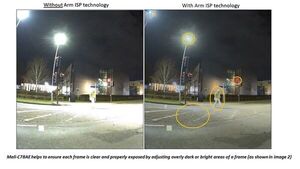
Arm introduces new automotive image signal processor to advance adoption of driver assistance and automation technologies
"Advanced Driver Assist Systems (ADAS) have grown from a premium vehicle feature to a capability consumers now expect as standard in new vehicles. In parallel, the global chip shortage is making it clear to the automotive industry the criticality of silicon and electronics to the development and competitive positioning of its products. Drivers increasingly depend on ADAS applications such as collision avoidance, lane departure warnings and automated emergency braking, and vehicles increasingly rely on cameras positioned around the car to enable many of these features. Indeed, according to a recent report from Strategy Analytics the value of the automotive camera market is expected to grow by greater than 19% from 2020 to 2025, making it the most important sensor type in providing data needed for the vehicle to make decisions about its surroundings. As the number and sophistication of vehicle cameras increases, so does the compute power needed to translate the high throughput of image data – efficiently and safely – into outputs that meet the varying requirements for machine and human vision. To enable new capabilities in ADAS and autonomous driving, the industry will need a new approach to image processing, and to address this, we have added the Mali-C78AE ISP to our portfolio of IP specifically developed to meet the performance and safety needs of automotive applications." [...]

Intel Launches Xeon D Processor Built for the Network and Edge
"Today, ahead of MWC Barcelona 2022, Intel launched new Intel® Xeon® D processors: the D-2700 and the D-1700. They are Intel’s newest system-on-chip (SoC) built for the software-defined network and edge, with integrated AI and crypto acceleration, built-in Ethernet, support for Intel® Time Coordinated Computing (Intel® TCC) and Time Sensitive Networking (TSN), and industrial-class reliability. New Intel Xeon D processors extend compute with acceleration beyond the core data center, generating a better overall experience for key network and edge usages and workloads. “As the industry enters a world of software-defined everything, Intel is delivering programmable platforms for networking and the edge to enable one of the most significant transformations our industry has ever seen. The new Intel Xeon D processor is built for this. Based on the proven and trusted Intel architecture, this processor is designed for a range of use cases to unleash innovation across the network and edge.” –Dan Rodriguez, Intel corporate vice president, Network & Edge Group, general manager of the Network Platforms Group Why It Matters: The growing opportunity for network and edge infrastructure will reach $77 billion by 2026¹, and more than 50% of data is expected to be created and processed outside of traditional data centers by 2025²." [...]

Industry’s First Automotive-Qualified Gen 4 PCIe® Switches Enable Autonomous Driving Ecosystem
"High-speed, low-latency connectivity solutions for distributed, heterogenous compute systems are a fundamental element in next-generation autonomous driving applications. Microchip Technology Inc. (Nasdaq: MCHP) is announcing the market’s first Gen 4 automotive-qualified PCIe® switches. These Switchtec™ PFX, PSX and PAX switch solutions provide cutting-edge compute interconnect capabilities for Advanced Driver Assistance Systems (ADAS). “Our automotive-qualified portfolio of Switchtec Gen 4 switches provides the lowest latency and high bandwidth required to link the CPU and accelerator building blocks used in ADAS applications,” says Krishna Mallampati, associate director of marketing and applications for Microchip’s data center solutions business unit. “We are delighted to see the culmination of several years of collaboration with key technology partners and to bring these solutions to market.” Switchtec Gen 4 PCIe switches provide the high-speed interconnect that supports distributed, real-time, safety-critical data processing in ADAS architectures. PCIe is emerging as the preferred compute interconnect solution for the automotive industry for the same reasons it has become pervasive in the data center market." [...]
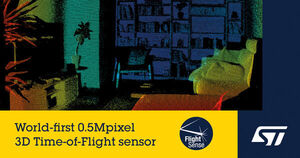
STMicroelectronics transforms digital vision with the market’s first 0.5Mpixel depth image sensor
"STMicroelectronics (NYSE: STM), a global semiconductor leader serving customers across the spectrum of electronics applications, has announced a new family of high-resolution Time-of-Flight sensors that bring advanced 3D depth imaging to smartphones and other devices. The 3D family debuts with the VD55H1. This sensor maps three-dimensional surfaces by measuring the distance to over half a million points. Objects can be detected up to five meters from the sensor, and even further with patterned illumination. VD55H1 addresses emerging AR/VR market use cases including room mapping, gaming, and 3D avatars. In smartphones, the sensor enhances the performance of camera-system features including bokeh effect, multi-camera selection, and video segmentation." [...]
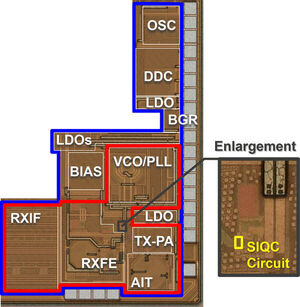
Renesas Develops Bluetooth Low Energy RF Transceiver Technologies that Simplify Board Design, Reduce Circuit Size and Increase Power Efficiency
"Announced at ISSCC 2022: Impedance Tuning and Reference Signal Self-Correction Technologies Can Facilitate Bluetooth LE Implementation in IoT Devices. Renesas Electronics Corporation (TSE:6723), a premier supplier of advanced semiconductor solutions, today announced the development of two 2.4 GHz RF transceiver technologies that support the Bluetooth® Low Energy (LE) low-power, near-field communication standard. The new technologies also achieve a smaller mounting area and better power efficiency. Renesas presented these technologies at International Solid-State Circuits Conference 2022 (ISSCC 2022), held between February 20 and 24 in San Francisco. In addition to being compact, low cost, and power efficient, IoT devices must provide flexible support for Bluetooth LE regardless of their implementation format. Renesas has developed two new technologies to address these requirements: 1) a matching circuit technology that covers a wide impedance range and enables the IC to match a variety of antenna and board impedances without an external impedance-matching circuit; 2) a signal correction technology for locally generated reference signals that uses a small circuit to self correct inconsistencies in the circuit elements and variations in surrounding conditions without calibration." [...]
Ciência e Tecnologia

From the streets to the stratosphere: clean driving technology enables cleaner rocket fuel
"A chemical used in electric vehicle batteries could also give us carbon-free fuel for space flight, according to new UC Riverside research. In addition to emission reductions, this chemical also has several advantages over other types of rocket fuels: higher energy, lower costs, and no requirement for frozen storage. The chemical, ammonia borane, is currently used for storing the hydrogen in fuel cells that power electric vehicles. UCR researchers now understand how this combination of boron and hydrogen can release enough energy to also launch rockets and satellites. “We are the first to demonstrate that in addition to electric vehicles, ammonia borane can be used to make rockets go too, under the right conditions,” said Prithwish Biswas, UCR chemical engineer and first author of the new study. Their demonstration has now been published in The Journal of Physical Chemistry C. The most commonly used rocket fuels are hydrocarbon based and are known to have a variety of negative environmental impacts." [...]
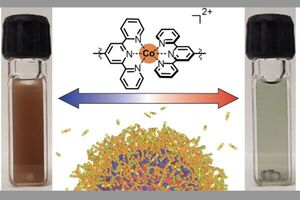
Versatile ‘Nanocrystal Gel’ Could Enable Advances in Energy, Defense and Telecommunications
"New applications in energy, defense and telecommunications could receive a boost after a team at The University of Texas at Austin created a new type of “nanocrystal gel” — a gel composed of tiny nanocrystals each 10,000 times smaller than the width of a human hair that are linked together into an organized network. The crux of the team’s discovery is that this new material is easily tunable. That is, it can be switched between two different states by changing the temperature. This means the material can work as an optical filter, absorbing different frequencies of light depending on whether it’s in a gelled state. So, it could be used, for example, on the outside of buildings to control heating or cooling dynamically. This type of optical filter also has applications for defense, particularly for thermal camouflage." [...]

Breakthrough in Cathode Chemistry Clears Path for Lithium-Sulfur Batteries' Commercial Viability
"America’s growing demand for electric vehicles (EVs) has shed light on the significant challenge of sustainably sourcing the battery technology necessary for the broad shift to renewable electric and away from fossil fuels. In hopes of making batteries that not only perform better than those currently used in EVs, but also are made from readily available materials, a group of Drexel University chemical engineers have found a way to introduce sulfur into lithium-ion batteries – with astounding results. With global sales of EVs more than doubling in 2021, prices of battery materials like lithium, nickel, manganese and cobalt surged and supply chains for these raw materials, most of which are sourced from other countries, became bottlenecked due to the pandemic. This also focused attention on the primary providers of the raw materials: countries like Congo and China; and raised questions about the human and environmental impact of extracting them from the earth. Well before the EV surge and battery material shortage, developing a commercially viable sulfur battery has been the battery industry’s sustainable, high-performing white whale. This is because of sulfur’s natural abundance and chemical structure that would allow it to store more energy." [...]
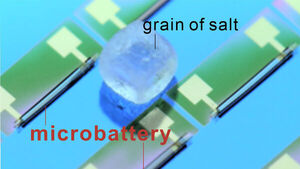
World's Smallest Battery Can Power Computers with the Size of a Grain of Dust
"A research team led by Chemnitz University of Technology with the participation of IFW Dresden and Changchun Institute of Applied Chemistry present an application-oriented method for an unsolved problem in microelectronics - Publication in the prestigious journal Advanced Energy Materials Computers are getting smaller and smaller, just as current cell phones offer computing power similar to that of a laptop. And the trend toward miniaturization continues. Smart dust applications (tiny microelectronic devices), such as biocompatible sensor systems in the body, demand computers and batteries smaller than a dust mote. So far, this development has been hindered by two main factors: lack of on-chip power sources for operation anytime and anywhere and difficulties in producing integrable microbatteries. In the current issue of the prestigeous and highly cited journal Advanced Energy Materials, Prof. Dr. Oliver G. Schmidt, head of the Professorship for Material Systems of Nanoelectronics and Scientific Director of the Center for Materials, Architectures and Integration of Nanomembranes (MAIN) at Chemnitz University of Technology, Dr. Minshen Zhu, who has been working in Prof. Schmidt's group at the Research Center MAIN since February 2022, and researchers from Leibniz Institute for Solid State and Materials Research (IFW) Dresden and Changchun Institute of Applied Chemistry present a solution to these challenges. They discuss how battery-powered smart dust applications can be realized in the sub-millimeter-scale and present the world's smallest battery by far as an application-oriented prototype." [...]
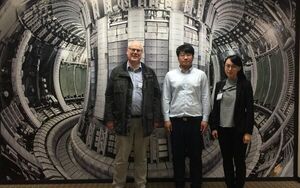
Surrey research is helping to usher in safe, low-carbon electricity generated by nuclear fusion
"Materials engineers at the University of Surrey and the UK Atomic Energy Authority are supporting an international effort to develop a new, economically viable and safe source of low carbon electricity through nuclear fusion. The Surrey research team will be using their expertise to upgrade stress measurement techniques that can allow scientists to map the residual pressure within a volume of steel, rather than in single points. The Surrey team’s new approach will be used to prove whether welds are safe and effective to use in future fusion energy plants. Dr Tan Sui, Senior Lecturer in Materials Engineering at the University of Surrey, who led the research, said: “Developing techniques and introducing new approaches to UK research is essential if we’re to move towards energy generated through fusion, which could be a key part of the world’s long-term energy needs by the second half of this century. Our next step is to process the data acquired through these processes into a simulation model which will enable us to accurately predict the residual stress on EUROFER 97 steel joints after welding.” Dr Yiqiang Wang, Senior Materials Engineer at the UK Atomic Energy Authority, said: ‘‘We are now entering the engineering design phase for the next generation of nuclear fusion power plants, building upon decades of research at UKAEA and the wider international fusion community. Our team will tackle engineering challenges to accelerate fusion demonstrators." [...]

Entanglement unlocks scaling for quantum machine learning
"New No-Free-Lunch theorem for quantum neural networks gives hope for quantum speedup. The field of machine learning on quantum computers got a boost from new research removing a potential roadblock to the practical implementation of quantum neural networks. While theorists had previously believed an exponentially large training set would be required to train a quantum neural network, the quantum No-Free-Lunch theorem developed by Los Alamos National Laboratory shows that quantum entanglement eliminates this exponential overhead. “Our work proves that both big data and big entanglement are valuable in quantum machine learning. Even better, entanglement leads to scalability, which solves the roadblock of exponentially increasing the size of the data in order to learn it,” said Andrew Sornborger, a computer scientist at Los Alamos and a coauthor of the paper published Feb. 18 in Physical Review Letters. “The theorem gives us hope that quantum neural networks are on track towards the goal of quantum speed-up, where eventually they will outperform their counterparts on classical computers.” The classical No-Free-Lunch theorem states that any machine-learning algorithm is as good as, but no better than, any other when their performance is averaged over all possible functions connecting the data to their labels." [...]

All About ITMO Researchers’ Latest Advances in Wireless Power Transfer
"Wireless power transfer technologies have been present on the market for several years now in the form of charging devices for smartphones and toothbrushes. But they are far from perfect: the capacities are lower than in analogous devices and the efficiency depends on the device’s ability to properly sync with the charger. Today, we’ll be looking into ways to reduce energy losses in WPTdevices and what the staff of ITMO’s Faculty of Physics have accomplished in this field. Wireless power transfer (WPT) technologies are used to charge all kinds of devices: smartphones, laptops, toothbrushes, and even electric cars, all without requiring any physical contact with the energy source. In such systems, there are two types of loss depending on whether it’s caused by the charging station’s material or by radiation. That is why experts in optics and nanophotonics are especially interested in nonradiating energy sources, which don’t emit energy in the far field and ensure its prompt capture in the near field." [...]

Perovskites used to make efficient artificial retina
"Inspired by the human eye, a neuromorphic vision system recognizes handwritten numbers. An artificial electronic retina that can "see" in a similar way to the human vision system and can recognize handwritten digits has been built by KAUST researchers as they seek to develop better options for computer vision applications. Mani Teja Vijjapu, an electrical engineering Ph.D. student, Khaled Nabil Salama and coworkers have designed and fabricated an array of photoreceptors that detect the intensity of visible light via a change in electrical capacitance, mimicking the behavior of the eye’s rod retina cells. When the array was connected to an electronic CMOS-sensing circuit and a spiking neural network (a single-layer network with 100 output neurons), it was able to recognize handwritten numbers with an accuracy of around 70 percent. “The ultimate goal of our research in this area is to develop efficient neuromorphic vision sensors to build efficient cameras for computer vision applications,” explained Salama. “Existing systems use photodetectors that require power for their operation and thus consume a lot of energy, even on standby." [...]

More sensitive X-ray imaging
"Improvements in the material that converts X-rays into light, for medical or industrial images, could allow a tenfold signal enhancement. Scintillators are materials that emit light when bombarded with high-energy particles or X-rays. In medical or dental X-ray systems, they convert incoming X-ray radiation into visible light that can then be captured using film or photosensors. They’re also used for night-vision systems and for research, such as in particle detectors or electron microscopes. Researchers at MIT have now shown how one could improve the efficiency of scintillators by at least tenfold, and perhaps even a hundredfold, by changing the material’s surface to create certain nanoscale configurations, such as arrays of wave-like ridges. While past attempts to develop more efficient scintillators have focused on finding new materials, the new approach could in principle work with any of the existing materials." [...]

USTC Scientists Break Quantum Key Distribution Record Over 830-km Optical Fibers
"Quantum key distribution (QKD) is presently attracting immense research interest on the global level due to its revolutionary potential to enable information-theoretically secure communication. However, the wide applications of QKD are curtailed by the channel loss since the encoded photons cannot be amplified or relayed via classical optical techniques to keep its security, which limits the increase of key rate and distance of QKD. A research team led by Academician Guo Guang-Can from University of Science and Technology of China (USTC) extended the transmission distance of QKD to over 830 km optical fibers. They broke the record of 605 km achieved by researchers from Toshiba’s Cambridge Research Laboratory, and made an important step towards terrestrial quantum secure communication and networks over the scale of 1000 km. The work was published online in Nature Photonics on January 17. Twin-field quantum key distribution (TF-QKD) protocol proposed in 2018 overcame the fundamental rate-distance limit of QKD, but its theoretical improvement and experimental technology development were extremely challenging." [...]

Physicists observe an exotic “multiferroic” state in an atomically thin material
"Discovery shows for the first time that multiferroic properties can exist in a two-dimensional material; could lead to more efficient magnetic memory devices. MIT physicists have discovered an exotic “multiferroic” state in a material that is as thin as a single layer of atoms. Their observation is the first to confirm that multiferroic properties can exist in a perfectly two-dimensional material. The findings, published today in Nature, pave the way for developing smaller, faster, and more efficient data-storage devices built with ultrathin multiferroic bits, as well as other new nanoscale structures. “Two-dimensional materials are like LEGOs — you put one on top of another to make something different from either piece alone,” says study author Nuh Gedik, professor of physics at MIT. “Now we have a new LEGO piece: a monolayer multiferroic, which can be stacked with other materials to induce interesting properties.” In addition to Gedik, the study’s authors at MIT include lead author Qian Song, Connor Occhialini, Emre Egeçen, Batyr Ilyas, and Riccardo Comin, the Class of 1947 Career Development Associate Professor of Physics, along with collaborators in Italy and Japan and at Arizona State University." [...]
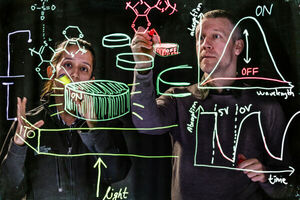
Nanoantennas for light controlled electrically
"Researchers at Linköping University have developed optical nanoantennas that can be turned on/off and gradually tuned by applying electrical potentials. The study, which has been published in Advanced Materials, opens for applications including dynamic flat metaoptics and tuneable smart materials. Already in the medieval times, nanostructures of noble metals were embedded in glass to create beautiful colours. Although not known at the time, the colours appear because light at certain frequencies transforms into plasmons, which are collective charge oscillations in the metallic nanoparticles. The nanoparticles act as antennas for light, which makes them very versatile. For example, plasmonic nanoantennas are now explored in applications ranging from energy conversion and photocatalysis to biosensing and flat metaoptics." [...]

Colossal black holes locked in cosmic dance at heart of galaxy
"Astronomers find evidence for the tightest-knit supermassive black hole duo observed to date. An epic deep space cosmic ballet of two giant black holes orbiting one another every two years has been observed for the first time by an international team of astronomers. Locked in an epic cosmic waltz 9 billion light-years away the two supermassive black holes appear to be orbiting around each other every two years. The two massive bodies are each hundreds of millions of times the mass of our sun and separated by a distance of roughly fifty times that between our sun and Pluto. When the pair merge in roughly 10,000 years, the titanic collision is expected to shake space and time itself, sending gravitational waves across the universe. The astounding new research was published in The Journal of Astrophysical Letters today." [...]

1 million laser zaps on Mars: ChemCam and SuperCam celebrate an impressive milestone
"On the one-year anniversary of the Perseverance rover’s landing, here’s a look back at some of the discoveries the Los Alamos-led instruments have helped make. The SuperCam (on the Perseverance rover) and ChemCam (on Curiosity) instruments are tools that use lasers to search for the chemical signs of past life on Mars. Perseverance, which landed on Mars one year ago today (Feb. 18), and the Curiosity rover, which landed in 2012, have been busy exploring the Red Planet and helping researchers better understand its potential for ancient microbial life. Developed at the Laboratory, the two instruments on the rovers recently hit an impressive milestone: They’ve fired more than one million laser shots combined. ChemCam has zapped its laser 885,000 times; SuperCam has fired more than 115,000. The instruments use a technique called laser-induced breakdown spectroscopy (LIBS) to zap rocks to create a plasma, and then collect the light from that plasma to understand what elements are present on the planet’s surface." [...]

Cutting Through the Noise
"A collaboration between Lawrence Berkeley National Laboratory’s (Berkeley Lab’s) Applied Mathematics and Computational Research Division (AMCRD) and Physics Division has yielded a new approach to error mitigation that could help make quantum computing’s theoretical potential a reality. The research team describes this work in a paper published Dec. 27 in Physical Review Letters, "Mitigating Depolarizing Noise on Quantum Computers with Noise-Estimation Circuits.” “Quantum computers have the potential to solve more complex problems way faster than classical computers,” said Bert de Jong, one of the lead authors of the study and the director of the AIDE-QC and QAT4Chem quantum computing projects. De Jong also leads the AMCRD’s Applied Computing for Scientific Discovery Group. “But the real challenge is quantum computers are relatively new. And there's still a lot of work that has to be done to make them reliable.” For now, one of the problems is that quantum computers are still too error-prone to be consistently useful. This is due in large part to something known as “noise” (errors)." [...]
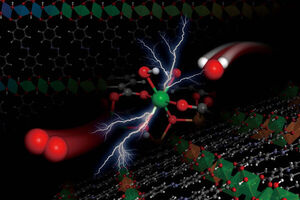
A new, inexpensive catalyst speeds the production of oxygen from water
"The material could replace rare metals and lead to more economical production of carbon-neutral fuels. An electrochemical reaction that splits apart water molecules to produce oxygen is at the heart of multiple approaches aiming to produce alternative fuels for transportation. But this reaction has to be facilitated by a catalyst material, and today’s versions require the use of rare and expensive elements such as iridium, limiting the potential of such fuel production. Now, researchers at MIT and elsewhere have developed an entirely new type of catalyst material, called a metal hydroxide-organic framework (MHOF), which is made of inexpensive and abundant components. The family of materials allows engineers to precisely tune the catalyst’s structure and composition to the needs of a particular chemical process, and it can then match or exceed the performance of conventional, more expensive catalysts. The findings are described today in the journal Nature Materials, in a paper by MIT postdoc Shuai Yuan, graduate student Jiayu Peng, Professor Yang Shao-Horn, Professor Yuriy Román-Leshkov, and nine others." [...]
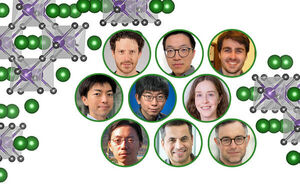
Evidence for Exotic Magnetic Phase of Matter
"Scientists identify a long-sought magnetic state predicted nearly 60 years ago Scientists at the U.S. Department of Energy’s Brookhaven National Laboratory have discovered a long-predicted magnetic state of matter called an “antiferromagnetic excitonic insulator.” “Broadly speaking, this is a novel type of magnet,” said Brookhaven Lab physicist Mark Dean, senior author on a paper describing the research just published in Nature Communications. “Since magnetic materials lie at the heart of much of the technology around us, new types of magnets are both fundamentally fascinating and promising for future applications.” The new magnetic state involves strong magnetic attraction between electrons in a layered material that make the electrons want to arrange their magnetic moments, or “spins,” into a regular up-down “antiferromagnetic” pattern. The idea that such antiferromagnetism could be driven by quirky electron coupling in an insulating material was first predicted in the 1960s as physicists explored the differing properties of metals, semiconductors, and insulators. “Sixty years ago, physicists were just starting to consider how the rules of quantum mechanics apply to the electronic properties of materials,” said Daniel Mazzone, a former Brookhaven Lab physicist who led the study and is now at the Paul Scherrer Institut in Switzerland. “They were trying to work out what happens as you make the electronic ‘energy gap’ between an insulator and a conductor smaller and smaller. Do you just change a simple insulator into a simple metal where the electrons can move freely, or does something more interesting happen?” The prediction was that, under certain conditions, you could get something more interesting: namely, the “antiferromagnetic excitonic insulator” just discovered by the Brookhaven team." [...]

Low-cost, 3D printed device may broaden use of focused ultrasound technique
"Researchers and clinicians have been working to use focused ultrasound combined with microbubbles to open the blood-brain barrier (BBB) for both noninvasive diagnostic use as well as to deliver treatments to the brain for tumors and neurodegenerative diseases. However, the few existing devices for preclinical research are expensive, bulky and lack the precision needed for small animal research. Hong Chen, associate professor of biomedical engineering in the McKelvey School of Engineering and of radiation oncology in the School of Medicine at Washington University in St. Louis, and her team have developed a low-cost, easy-to-use and highly precise focused ultrasound (FUS) device that can be used on small animal models in preclinical research. The FUS transducer, created in-house using a 3D printer, costs about $80 to fabricate. It can be integrated with a commercially available stereotactic frame to precisely target a mouse brain. Results of the work were published online in IEEE Transactions on Biomedical Engineering Feb. 15." [...]

New power sources
"Thirty-six million people in the U.S. use an energy system developed by a handful of activists in the 1990s. An MIT scholar examines this unusual story. In the mid-1990s, a few energy activists in Massachusetts had a vision: What if citizens had choice about the energy they consumed? Instead of being force-fed electricity sources selected by a utility company, what if cities, towns, and groups of individuals could purchase power that was cleaner and cheaper? The small group of activists — including a journalist, the head of a small nonprofit, a local county official, and a legislative aide — drafted model legislation along these lines that reached the state Senate in 1995. The measure stalled out." [...]
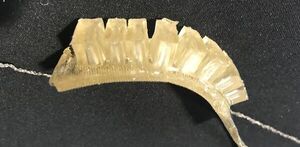
Self-healing materials for robotics made from ‘jelly’ and salt
"Researchers have developed self-healing, biodegradable, 3D-printed materials that could be used in the development of realistic artificial hands and other soft robotics applications. The low-cost jelly-like materials, developed by researchers at the University of Cambridge, can sense strain, temperature and humidity. And unlike earlier self-healing robots, they can also partially repair themselves at room temperature. The results are reported in the journal NPG Asia Materials. Soft sensing technologies could transform robotics, tactile interfaces and wearable devices, among other applications. However, most soft sensing technologies aren’t durable and consume high amounts of energy." [...]
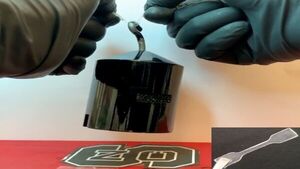
New Material Offers Remarkable Combo of Toughness and Stretchiness
"Researchers have created new materials that are very stretchable and extremely tough. “Materials that can be deformed, but that are difficult to break or tear, are desirable,” says Michael Dickey, co-corresponding author of a paper on the work and the Camille & Henry Dreyfus Professor of Chemical and Biomolecular Engineering at North Carolina State University. “Nature is good at this; think of cartilage as an example. But engineering synthetic materials with these properties has been difficult, which makes our work here exciting.” The new materials fall under the broader category of ionogels, which are polymer networks that contain salts that are liquid at room temperature. These salts are called ionic liquids. Dickey and his collaborators have made ionogels that are nearly 70% liquid, but have remarkable mechanical properties." [...]
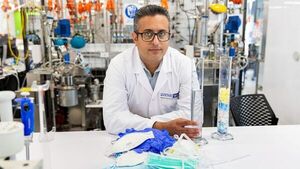
Turning PPE into water: sounds like a miracle?
"Turning non-recyclable personal protective equipment into water and vinegar could be the game-changing solution the world needs to stop tonnes of PPE being dumped daily into landfills and oceans. This miracle-sounding process has been developed at the University of Auckland’s Faculty of Engineering. Shredded masks, gowns, gloves and plastic safety glasses go into a machine; hot, pressurised water and compressed air are applied; water and acetic acid are the end-products. The PPE-to-liquid process is carried out at a temperature of 300°C and takes about an hour in a small prototype machine in a laboratory in the faculty. Gaseous by-products from the process are oxygen and low concentrations of carbon dioxide which can be safely discharged. “This is a clean, chemical-free solution which will be a game changer internationally,” says Dr Saied Baroutian, an associate professor in the faculty’s Department of Chemical and Materials Engineering." [...]

Transparent ultrasound chip improves cell stimulation and imaging
"Ultrasound scans, best known for monitoring pregnancies or imaging organs, can also be used to stimulate cells and direct cell function. A team of Penn State researchers has developed an easier, more effective way to harness the technology for biomedical applications. The team created a transparent, biocompatible ultrasound transducer chip that resembles a microscope glass slide and can be inserted into any optical microscope for easy viewing. Cells can be cultured and stimulated directly on top of the transducer chip and the cells’ resulting changes can be imaged with optical microscopy techniques. Published in the Royal Society of Chemistry’s journal Lab on a Chip, the paper was selected as the cover article for the December 2021 issue. Future applications of the technology could impact stem cell, cancer and neuroscience research." [...]
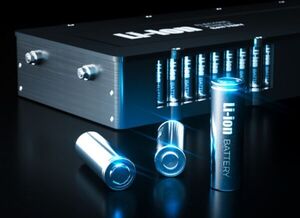
UH Researchers Develop 3D Imaging Technique to Understand How Dendrites Form in Batteries
"Process Could Help Manufacturers Make Batteries More Efficient. As the world lessens its dependence on fossil fuels, industries and manufacturers are turning to lithium-ion batteries to power the machines that make modern life possible. These batteries power electric vehicles, mobile phones, drones, vacuum cleaning robots and other machines and will be an essential component to the energy transition. But there’s a problem with lithium-ion batteries: as they age and are charged, they develop dendrites. A research team from the University of Houston is trying to solve the dendrite problem by investigating how these structures grow on batteries. Dendrites are spiky structures that accumulate on the batteries’ anodes." [...]
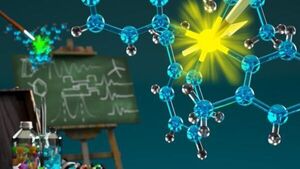
A new platform for customizable quantum devices
"A ground-up approach to qubit design leads to a new framework for creating versatile, highly tailored quantum devices. Advances in quantum science have the potential to revolutionize the way we live. Quantum computers hold promise for solving problems that are intractable today, and we may one day use quantum networks as hackerproof information highways. The realization of such forward-looking technologies hinges in large part on the qubit — the fundamental component of quantum systems. A major challenge of qubit research is designing them to be customizable, tailored to work with all kinds of sensing, communication and computational devices. Scientists have taken a major step in the development of tailored qubits." [...]

Revealing New States in 2D Materials
"Würzburg researchers have highlighted and quantified a three-fold coupling between exciton, photon, and phonon in a microcavity with embedded two-dimensional materials. Coupling of phonon (green), exciton (pink), and photon of a microcavity (red) in a 2D material. (Image: Donghai Li / Universität Würzburg) Atomically thin two-dimensional (2D) materials can provide highly interesting excitonic properties, which render them an attractive platform to explore polaritonic physics. In the literature, a variety of inorganic exciton-polariton systems have been studied experimentally and described theoretically using the broadly accepted model of two coupled oscillators, where only the coupling between excitons and cavity photons is considered. Now, Donghai Li and a group of researchers from Julius-Maximilians-Universität (JMU) Würzburg in Bavaria, Germany, have found that placing 2D semiconductors in microcavities can lead to a strong interaction between not just excitons and cavity photons but also with phonons. The team believes that their results could shift the paradigm of exciton-polariton physics in 2D materials by highlighting and quantifying the role of phonons therein." [...]
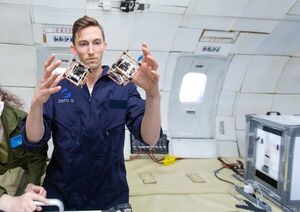
Robotic cubes shapeshift in outer space
"Self-reconfiguring ElectroVoxels use embedded electromagnets to test applications for space exploration. If faced with the choice of sending a swarm of full-sized, distinct robots to space, or a large crew of smaller robotic modules, you might want to enlist the latter. Modular robots, like those depicted in films such as "Big Hero 6," hold a special type of promise for their self-assembling and reconfiguring abilities. But for all of the ambitious desire for fast, reliable deployment in domains extending to space exploration, search and rescue, and shape-shifting, modular robots built to date are still a little clunky. They’re typically built from a menagerie of large, expensive motors to facilitate movement, calling for a much-needed focus on more scalable architectures — both up in quantity and down in size. Scientists from MIT’s Computer Science and Artificial Intelligence Laboratory (CSAIL) called on electromagnetism — electromagnetic fields generated by the movement of electric current — to avoid the usual stuffing of bulky and expensive actuators into individual blocks." [...]
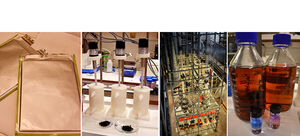
Perfecting the EV battery recycling process
"Recycling of electric car batteries can be easier, cheaper, and more environmentally friendly, according to a new scientific article from Chalmers University of Technology, Sweden, which outlines an optimised recycling process. The research, published in the journal Waste Management, has been carried out by some of the world’s foremost experts in the field, and represents a vital step towards the electromobility society of the future. As the use of electric vehicles (EVs) increases, recycling and recovery processes for EV batteries and the critical raw metals used in their production are becoming an increasingly important area of research. One method that currently attracts a lot of interest is a combination of thermal pretreatment and hydrometallurgy, in which aqueous chemistry is used to recover the metals. Several companies are developing systems that will use this combination, but the researchers at Chalmers University of Technology, Sweden, discovered that these companies use widely differing temperatures and times in their processes, and that there was a great need for a comparative study to determine the optimal thermal treatment and hydrometallurgical process for recycling lithium-ion batteries. 30 minutes and room temperature can suffice A key finding of the new study was that the hydrometallurgical process can be carried out at room temperature." [...]
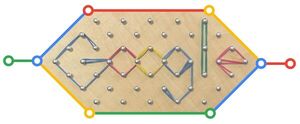
A New Library for Network Optimization
"Networks are all around us from the electrical circuits inside our computers to the multitude of internet servers that route packets of data around the globe. Even the web itself is a network of pages connected to each other by a myriad of blue links. A network's structure is referred to as its topology. Network topologies can be physical or logical, centralized or decentralized, and fully or partially connected. Given a network with n nodes, the number of possible topologies grows exponentially with n; even just a dozen nodes admit nearly a trillion trillion possible configurations! We are pleased to announce the open source release of network-opt, a C++ library that supports the optimization of network topologies." [...]
Documentação
A documentação é parte essencial do processo de aprendizagem e a Internet além de artigos interessantes de explorar também tem alguma documentação em formato PDF interessante de ler. Todos os links aqui apresentados são para conteúdo disponibilizado livremente pelo editor do livro.
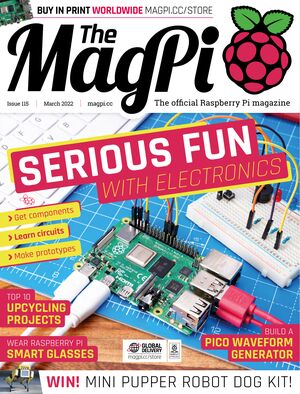
The MagPi 115
"Inside The MagPi magazine issue #115 - Serious Fun with Electronics. Get out your kit and components and start prototyping your own circuits with Raspberry Pi. - #MonthOfMaking 2022. Get involved with other Raspberry Pi fans in this year’s incredible maker event. - Raspberry Pi OS 64-bit. Raspberry Pi’s operating system finally goes mainstream with 64-bit functionality." [...]
Projetos Maker
Diversos Projetos interessantes.
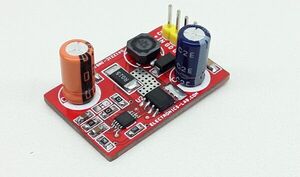
3V to 5V DC Output Step-Up DC-DC Converter using MAX668
"The project presented here is a powerful constant-frequency, pulse-width modulating (PWM), current-mode step-up DC-DC switching regulator efficiently producing 5V from input voltages between 3V to 5V. The project can be used in a portable device that works with a battery. The module produces a peak current of up to 1A and an output voltage of 5V DC. The MAX668 current-mode PWM controllers operate in a wide range of DC-DC conversion applications, including boost, SEPIC, flyback, and isolated output configurations. Optimum conversion efficiency is maintained over a wide range of loads by employing both PWM operation and Maxim’s proprietary Idle Mode control to minimize operating current at light loads. Other features include shutdown, adjustable internal operating frequency or synchronization to an external clock, soft start, adjustable current limit, and a wide (1.8V to 28V) input range." [...]

Simple to build High Power PEMF Therapy Device
"It can be used to improves sleep, mental focus, and the body’s overall performance by helping the energy output and regeneration of the body. Pulsed electromagnetic field therapy (PEMF therapy), also known as low field magnetic stimulation (LFMS) uses electromagnetic fields in an attempt to heal non-union fractures and depression. It can be used to supplement and enhance currently existing healthcare modalities. In addition, PEMF therapy improves sleep, mental focus, and the body’s overall performance by helping the energy output and regeneration of the body’s cells. In several of my previous videos I have presented you with simple ways to make this type of device without any great knowledge in the field of electronics. Commercial such devices are sold at a price of several hundred to thousands of dollars, so my goal is to make the simple to build and functional device available to more people who can not afford it." [...]

The RangePi made easier to connect LoRa network
"The RangePi made easier to connect LoRa network from anywhere at any time You may not be acquainted with LoRa, but you are probably familiar with the Internet of Things, and LoRa is set to alter the IoT. It's a wireless technology that's used for automatic metre reading, smart parking, and livestock tracking, among other things. Its capacity to transport packets across vast distances without consuming a lot of power is what makes it so popular. As a result, it's great for delivering little quantities of data to far-flung devices. However, there is a catch, and the hitch with LoRa is that setting up these devices is difficult. With the RangePi, we tried to make things easier." [...]

Let's Build Some World Class Hydrophones
"I spent 20 years in the Navy as a Submariner. Although I wasn't a Sonar Tech, I spent a lot of time in the Sonar Shack listening. You could hear all sorts of things; whales, crustaceans, pile drivers building north atlantic oil rigs, and of course, the occasional Russian Submarine. Being the Audio Guy I am, I found this fascinating and always wanted my own set of hydrophones to continue the journey. Which leads us to today's Instructable: Build your own professional grade hydrophones. These may not match the durability of what the Navy and commercial ones do, but they certainly meet or exceed the acoustic properties they do." [...]
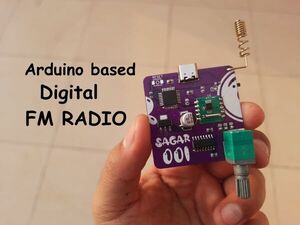
Arduino based Digital Audio FM Radio using RDA5807
"Its cool while working with digital circuits in frequency modulation, Gives you flexibility and more features with the custom PCB design. Hello guys, today we are going to have a look on, How I made an Arduino based FM and then turn its circuit into a fully functional PCB. In this tutorial you will learn, basic FM working, Arduino code for this FM, range, speakers, antenna and amplifiers used in this circuit. This type of digital circuits has a very big importance over any analog based circuits. It will reduce the circuitry and tuning methods. Features: 1) Based on digital method 2) Needs very less components 3) Stereo channel availability 4) Easy to tune 5) Onboard volume control 6) Large bandwidth (50MHz to 115MHz) 7) No coils, no variable capacitors 8) Low power consumption" [...]

81 LED Chaser - 555 Project
"If you have ever checked out 555 projects on the net, you may have come across an LED chaser. For those old enough, it's the same thing that Kitt used in Knight Rider! However, where most LED chasers use around 10 LED's, this build uses a matrix of 9 X 9 LEDS, making a total of 81! The other difference in this build to your normal LED chaser is it includes to pulse width generators, curtesy of 2 555 timers. This allows you to make some really interesting patterns and shapes via 2 potentiometers that control the X and Y axis. I also included the ability to change the speed from slow to fast for each axis which gives you even more ability to change the patterns produced." [...]

Bad Apple on 32K EEPROM
"This post covers how we interface a 32K EEPROM, a clock and an address register to a 20 x 4 LCD character display module and use it to play a video. We “decompress” the video by expanding our 8-bit data stream to 9 bits for playback in hardware. There is no CPU or microcontroller involved. To test step 1 of the homebrew cpu project we’ll see if we can play an actual video from the EEPROM to the LCD character display module. Bad Apple is an ideal video for this purpose: it’s essentially monochrome and most of the video is recognizable even at a very low resolution. The original Bad Apple video has 6569 frames at 30 fps for a running time of 3m39s." [...]

TinyML: Live Image Classification on ESP32-CAM and TFT
"A modified example that can display the captured image and its classification result on a display. Say goodbye to clumsy WiFi connections! A while ago, I decided to try out the example ESP32 Cam and Edge Impulse but found it broken. A lot of library dependencies were missing. It turns out that Espressif had overhauled their esp-face repo into esp-dl, and focused more on the more expensive ESP-EYE. You can find instructions in the original repo or this article of how to train your own TinyML model on Edge Impulse." [...]

cwymriad
"An electronic sound and light sculpture cwymriad is a ring modulation based sound sculpture which displays the output signal on an 8x16 LED matrix. 'cwymriad' is based on a dual ring modulation circuit in which the ESP32 creates both the carrier and modulation signals. The square wave output of the ESP is filtered down to something resembling a triangle wave and combined in the ring modulator before the resulting signal is sent through an echo effect, and then sent back to the ESP32's internal ADC so that it can be displayed on the LED matrix. I'm using an MCP4251 digital potentiometer to function as a sort of voltage controlled amplifier, except that the control voltage envelope is created in the code of the ESP and transferred to the digital pot via SPI. Ring modulation in itself is of course quite similar to amplitude modulation, but here the digital pot is doing the volume control, while the ring modulator is creating the bell-like sounds out of only a couple of oscillators. I'm using a PT2399 echo chip to give some depth to the sound, and the whole thing is amplified by two bridged LM380 chips, while the LED matrix is driven by a few MAX7219's." [...]

Dave's RP2040 Multitimer
"This is my multiple-category project/productivity timer with RGB keys (real keyboard switches and keycaps!) and a colorful RGB backlit LCD. It’s a device I couldn’t buy for any price. I’ve tried software timers (and have made several) for desktop and phones. But when tasks start switching quickly (exactly when I want to track them the most), it’s always been too much of a hassle to operate a software timer. I really wanted to be able to hit a single key to switch timer categories." [...]

Pico Railway Clock
"Reinvigorating a handsome old clock and making it super-accurate, without any internet. Uses a Raspberry Pi Pico, a radio antenna and a couple of components to emulate a signal from a Mother clock. The DCF77 signal is a radio signal that carries information from some Atomic Clocks. The signal covers most of Europe and is accurate to within a second over about 300,000 years (the DCF77 signal has been broadcasting the time since 1973 and in 2021 it was agreed to be continued for at least 10 more years). (The United States uses WWVB, United Kingdom uses MSF and Japan uses JJY. You could easily adapt the code to any of those signals) Hardware - Old 'nebenuhr' clock with secondary mechanism (a mechanism that is controlled by pulses from the mother-clock) - A ferrite receiver (for the DCF77 signal) - A microcontroller (Raspberry Pi Pico) - Real time clock (RTC) (backup for any radio signal issues) - H bridge (LN298), for the polarity switch that triggers the clock mechanism - Step-up module to send correct voltage pulse to the clock (replaces the dc power supply used in the video)" [...]

Mailbox Bot 1 .0 | IoT for the lazy
"I recently took an ESP32-Cam module and built it into my mailbox. Got tired of walking outside to check it only to find it’s empty. It was a mostly straight forward process, however, I did run into a few snags so I thought I’d document it a little in case you are stuck in a similar project. The camera takes images of the inside of the mailbox a few times a day and uploads them to an FTP server. It is powered by a single 18650 lithium-ion cell that is kept charged by a small solar panel. I am not using the onboard regulator of the ESP module (AMS1117)." [...]

Mini AGV as a Gas Decomposer using Fan with PID Control
"This robot walks along the trajectory that has been provided and acts as a building security guard from gas leaks. Introduction Automated Guided Vehicle (AGV) as a Gas Decomposer using a Fan with Control P is a security robot that can detect gas. This robot will walk following the existing line trajectory. When it detects gas around the line, this robot will stop and turn on the fan to remove or decompose the gas that is around. When the gas is not detected, the robot will return to the path following the existing line. We use P control to control the fan speed based on the detected gas intensity, where the more gas detected, the faster the fan speed will spin." [...]

Classify Music Genre with Arduino Nano 33 BLE Sense
"This project can automatically classify three different musical genres (i.e., classical, metal, and reggae) from device-playing music files. Dataset Music can be classified into genres in a variety of ways, including rock, pop, religious, and secular music. This project uses a deep learning approach to automatically classify different musical genres. We'll need a set of audio tracks that are similar in size and frequency range. The GTZAN genre classification dataset is the most widely recommended dataset for music genre classification projects, and it was collected specifically for this purpose. In the years 2000-2001, the GTZAN genre collection dataset was compiled." [...]
Secção Videos
Videos interessantes.
- "Magical" LEDs let my plants grow faster? (Experiment) The Future of Farming!That's all Folks!



